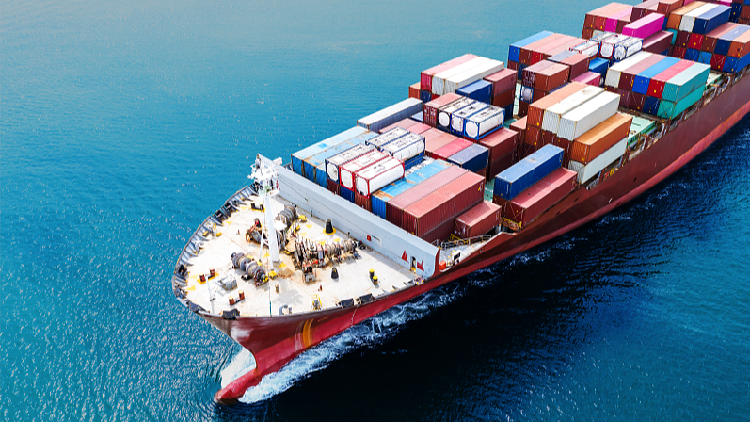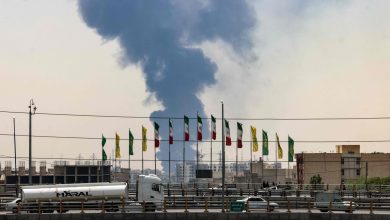Trade protectionism: A road leading to a narrow street

[ad_1]

<img src='https://news.cgtn.com/news/2024-08-02/Trade-protectionism-A-road-leading-to-a-narrow-street-1vIeoAYONPO/img/4a936593833445c8a4d1e233056564c6/4a936593833445c8a4d1e233056564c6.png' alt='An operating cargo ship. /CFP'
Editor’s note: Tian Huifang is a senior research fellow of the Institute of World Economics and Politics of the Chinese Academy of Social Sciences. The article reflects the author’s opinions and not necessarily the views of CGTN.
Economic globalization and trade liberalization are the driving forces for the world economy to achieve high speed growth and low inflation. For decades, countries around the world have continuously sought trade openness and promoted free flow of goods between nations, and have made significant accomplishments. The United States was once one of the important forces to promote free trade, but now it has become an important promoter of trade protectionism.
Since 2018, it has gone further and further on the path of trade protectionism, leading to continuous international trade frictions with other countries. In May 2024, the U.S. government further stepped up its competition with China in the field of electric vehicles (EVs) and other products, with plans to raise tariffs on Chinese EVs from the current 25 percent to 100 percent. The protectionist measures introduced by the U.S., including the imposition of tariffs, have not only seriously hindered the development of free trade, but also may incite nationalist sentiment, weaken the foundation of the international trading system, and ultimately have a backlash effect on the U.S. economy.
<img src='https://news.cgtn.com/news/2024-08-02/Trade-protectionism-A-road-leading-to-a-narrow-street-1vIeoAYONPO/img/3c80b4a7299b4d4cb40cc607b0452222/3c80b4a7299b4d4cb40cc607b0452222.jpeg' alt='A shopping cart in a supermarket. /CFP'
The U.S. tariff hike seriously violates international rules and the spirit of free trade. The tariffs imposed by the U.S. have a strong intention to balance trade. The motivation for the new round of U.S. tax measures stemmed from the conclusion of an investigation into China under the Section 301 of the U.S. Trade Act of 1974. However, the Section 301 report, which was based on a comprehensive review of China’s domestic laws and policies, such as the foreign investment management system, the overseas investment management system, the intellectual property protection system and the network information protection system, has not only violated Articles 6 and 16 of the General Agreement on Tariffs and Trade (GATT) 1994 and the rules of the WTO Agreement on Subsidies and Countervailing Measures and the Anti-dumping Agreement, but also generalized the exceptions and security concepts of WTO Understanding on Rules and Procedures Governing the Settlement of Disputes. The list of products subject to additional tariffs includes a large number of products unrelated to the industries mentioned in the Section 301 report (such as fishery products, cosmetics, and paper). Such trade-restrictive measures taken by the U.S., which indiscriminately include a large category of products, have exceeded the reasonable scope stipulated in Article 20 (a) of the GATT, rendered the principles established in international laws meaningless, and damaged the credibility of international multilateral organizations and institutions such as the WTO and the United Nations Commission on International Trade Law.
Although the protective trade policy may show certain effects in the short term in terms of supporting industrial return and increasing employment, it will inevitably bite the U.S. economy in the long run. Experience shows that the U.S. trade protectionism measures in recent years, especially the restrictions on the export of Chinese goods, have resulted in a loss of international trade benefits and high inflation levels as an economic cost. The trend of CPI changes in the U.S. is completely consistent with that of the world, and the magnitude of inflation changes in the U.S. is larger than that of the world, indicating that the U.S. has a typical inflation export effect to the world. After the U.S. imposed a 15 percent tariff rate in May 2019, the year-on-year growth rate of footwear and apparel excluding footwear significantly increased, and after the tariff rate was reduced from 15 percent to 7.5 percent in February 2020, the year-on-year growth rate of footwear and apparel excluding footwear significantly has decreased. From the level of product segmentation, it has been verified that the implementation of trade protectionism policies by the U.S. against China will lead to the rise of domestic commodity prices, while the reduction of tariffs will lead to the fall of domestic commodity prices. Protectionism would also have important implications for U.S. foreign policy, limiting the effectiveness of U.S. export strategies and forcing policymakers to seek exclusive bilateral agreements or unilateral concessions from trading partners rather than multilateral arrangements. The behavior of the U.S. also implies the instability of its foreign trade policy, which will inhibit its political cooperation with other major powers.
<img src='https://news.cgtn.com/news/2024-08-02/Trade-protectionism-A-road-leading-to-a-narrow-street-1vIeoAYONPO/img/d1f34f7e1fd8484c8b89498a81282a02/d1f34f7e1fd8484c8b89498a81282a02.jpeg' alt='Solar panels used in the desert, California. /CFP'
Tariff wars in the field of clean energy have not only undermined the international division of labor system, but also hindered the process of global green transition. The U.S. government’s tariffs on Chinese imports, including electric energy storage batteries, EVs, photovoltaic cell modules, as well as natural graphite, steel and aluminum materials, can only harm the industry and enterprises, and are very detrimental to the healthy development of the global automotive industry and its transition to electrification. The domestic market in China is huge with ample room for maneuver, and domestic demand is becoming the main driving force for economic development, which will help offset the negative impact of economic and trade frictions. However, the domestic production capacity in the U.S. is still far from being formed, and its current size cannot meet the installation demand. The restrictions on imported components will inevitably affect the demand for its installed capacity. The new round of anti-dumping and anti-subsidy probes will also affect investment in various states due to an insufficient supply of domestic products in the U.S., posing challenges to the country’s energy transition commitments. The U.S. Inflation Reduction Act and its implementation rules will also distort fair competition, and disrupt global industrial and supply chains, and its short-sighted and selfish behavior reflects its lack of responsibility as a major power in the climate emergency.
The current world economy is presenting a diversified pattern, with emerging economic forces rising. The U.S. should review its policies and reposition its role. Wielding the tariff stick to block the opening up of the world economy, and prevent trade liberalization and the advancement of other countries’ economies so as to maintain so-called economic and technological hegemony in the world, is actually reversing the wheel of history. Global green and sustainable development calls for fair and just competition, and trade protectionism and isolationism should not be the themes and competitive tools of global transformation.
[ad_2]
Source link





